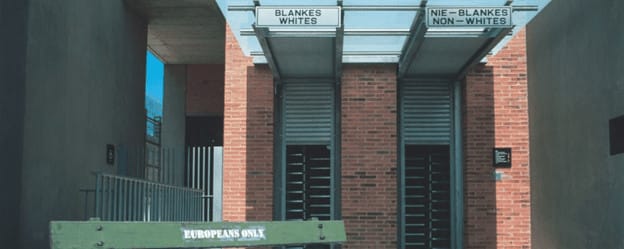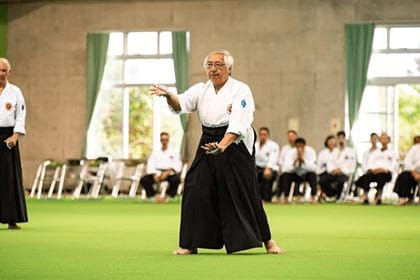Johannesburg is the New York of South Africa because of its multinational corporations, magnificent skyscrapers, and the Manhattan twin, Maboneng. The famous City of Gold was also the residence of South African revolutionary leader Nelson Mandela.
During apartheid, Johannesburg was marred with discriminatory rules. Many renowned martial arts practitioners and trainers like Fish Masilo, Frank Brandon, and Edward Jardine resisted racial laws. They continued their journey of shaping the future of martial arts in the country.
It was their courage and hard work that today, martial arts is booming in South Africa again.
Though Johannesburg has numerous modern and historical tourist attractions, it is most famous for its historical landmarks that feature the country's dramatic journey from an authoritarian, racist society to democracy.
Peeping Into the Segregated Past
The Apartheid Museum in the south of the city is a touching place that offers a perfect illustration of the country's discriminatory past.
The museum has two separate entrances labeled 'for whites' and 'for blacks.' Quite a satirical way to start your haunting experience inside the museum. The main hall benches are also tagged 'only for Europeans' to give you firsthand experience of the injustice faced by the black persons during those trying times.
You will also witness the heart-wrenching photographs Ernest Cole took during exile back in 1969. In the Mandela section of the museum, you can access magazines, newspapers, and footages of the inhumane segregation and Nelson Mandela's struggle for equal rights.
You'll surely come out of the museum touched by the black South African's miserable condition during apartheid and in awe of their struggle for equality.
Constitution Hill is another place to witness South Africa's dramatic journey toward equal human rights. It's a 100-year-old prison and military fort that today houses South Africa's highest court, the Constitutional Court.
World-renowned leaders, including Nelson Mandela, Mahatma Gandhi, and Barbara Hogan and thousands of other anti-segregationists, were confined here in its famous prisons, Number Four, Women's Jail, and Old Fort. You can view Fatima Meer's poignant paintings of the prison treatment when she was kept there.
Ups & Downs in Martial Arts During Apartheid
South Africa was flourishing in Ju-Jitsu and Judo before the apartheid period. The first Ju-Jitsu club was opened in 1928 by Dr. H. Johnson and Yusei Tepp.
In 1931 Prof. Jack Robinson, the English wrestler came to South Africa and opened Jitsu academies in many parts of the country. It was the golden era when many South African martial artists were competing worldwide.
During apartheid, the sport lost its luster. Separate teams were chosen for international tournaments like the South African white team and South African black team, which led to their expulsion from major tournaments.
Only white or colored people could open dojos. White could not train with a nonwhite. Training mixed-race class was against the law, and you could end up in prison.
However, some courageous masters, like Edward Jardine, continued to teach whites, colored, and black people without any discrimination.
Sifu Edward Jardine - Epitome of Determination
Edward Jardine is a third-generation Chinese South African and a Shihan (master) in both Tai Chi and Ryukyu Kobujutsu. He is a seventh-degree black belt in Ryukyu Kobujutsu and head of the International Tai Chi Society. Being a colored person, he and his brother were rejected by many dojos until sensei Roy Braun took them under his wing in Germiston.
In 1960, when it was illegal to teach a mixed-race class, Edward Jardine established his first dojo in Actonville, a predominantly Indian, colored, and black township.
His dojo trained without any racial discrimination. Doing the right thing was more important to him than the fear of getting arrested. He said, "We taught whoever we wanted. We did not think about the color."
However, he remembers vividly how the discriminatory laws made everyone feel hurt, embarrassed, and inferior.
He recalls, "The first dojo that I rented, one of the health inspectors said that the bylaws required that I have separate toilets for white and black and I was supposed to use the black toilets. We, however, ignored it and eventually used one toilet."
In those times, Chinese people were returning to their country in the face of oppressive state policies. But the Jardine family never left.
When his brother wasn't allowed to compete in the National Junior Championship for being Chinese, Edward turned to the classical system of Yuishinkai and Ryukyu Kobujutsu and Tai Chi that greatly enriched his life. It made him stronger mentally and spiritually and changed his outlook on life.
For him, martial arts is more than a sport; it's a lifestyle!
South Africa’s 1st Registered Martial Arts School
Today the organization has more than 40,000 members, mostly in Canada and European countries. His students are now teaching in dojos across Asia, Europe, and the US.
He also established the Johannesburg branch of Yuishinkai and Ryukyu Kobujutsu Branches. In the 1970s, he visited Tokyo and had the honor of meeting O'Sensei Gansho Inoue, the chief instructor of Yuishinkai.
Edward Jardine was an inspiration for the oppressed young martial artists during apartheid. He has seen people become healthier, more confident, and able to handle stress more effectively at home and work through martial arts training.
Looking back, the great master has no regrets in life. He said, "All negatives were lessons in life that led to positive things. I am very content with what I have achieved in martial arts and the way I've lived my life."
Edward Jardine is semi-retired now and has passed on his knowledge to his son Lee Jardine. Lee is the current head of the International Tai Chi Society and Yuishinkai and Ryukyu Kobujutsu. While you're in Johannesburg, you can contact Lee Jardine to get the honor of meeting Sifu Edward Jardine.



